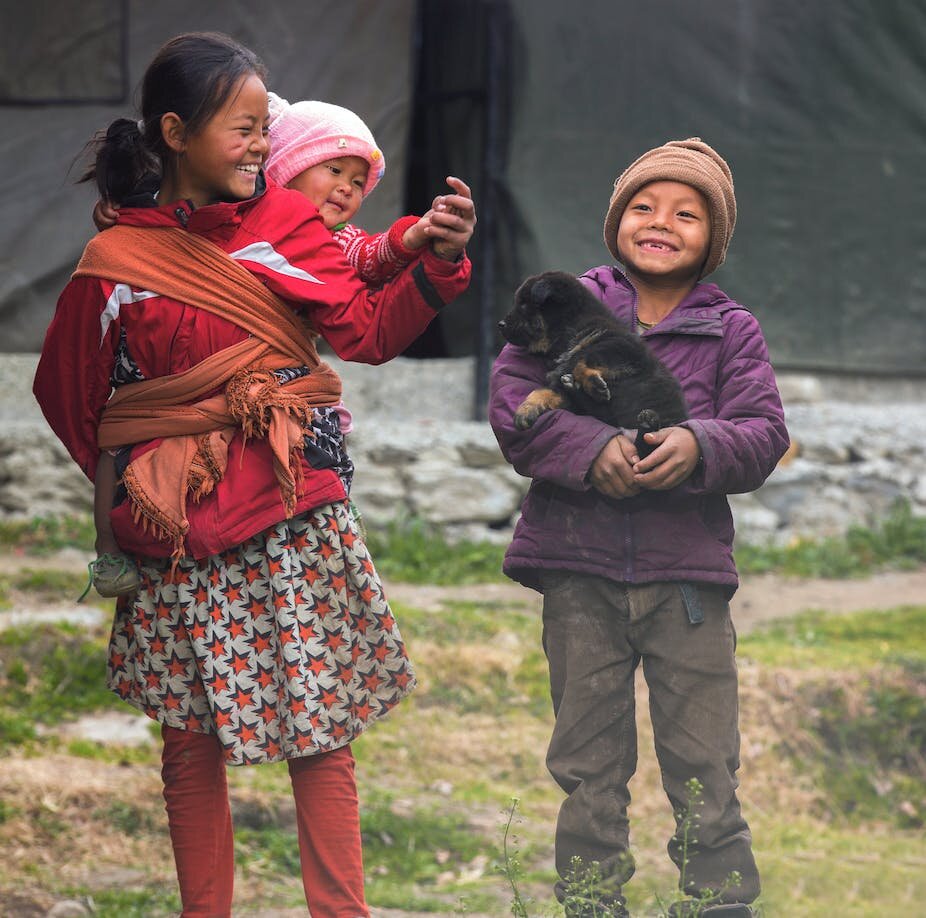Eldest daughters often take on the lion’s share of domestic responsibilities. Credit: Pexels/nishant aneja
Have you heard of “eldest daughter syndrome?” It’s the emotional burden eldest daughters tend to take on (and are encouraged to take on) in many families from a young age.
From caring for younger siblings, helping out with everyday chores, looking after sick parents to sorting shopping orders or online deliveries, eldest daughters often shoulder a heavy but invisible burden of domestic responsibility from a young age.
What’s wrong with that? You might ask, shouldn’t the eldest children, who are supposed to be more grown-up, help out and look after their younger siblings? Aren’t girls “naturally” better at caring? These popular assumptions are so entrenched that they can make it difficult for us to see the problem.
But #EldestDaughterSyndrome is now trending on TikTok, with adolescent girls speaking out about the unfair amount of unpaid (and unappreciated) labor they do in their families, as well as discussing its adverse effects on their lives, health and well-being.
Of course, the “syndrome” has existed for centuries across many parts of the world. So why is it now being spoken about as such an issue?
Despite women’s rise in education and employment, they still shoulder the lion’s share of housework. Indeed, progress towards gender equality in the workplace has not translated into gender equality at home. And eldest daughter syndrome can go some way to explain why this is the case.
Research shows that children make a notable but often overlooked contribution to domestic labor. Mirroring the gender divide among adults, girls between five and 14 years old spend 40% more time on domestic work than boys.
Following a patriarchal pecking order, the eldest daughter often bears the brunt of the burden among her siblings.
As voiced by many on TikTok, the syndrome can impair eldest daughters’ well-being and “steal” their childhood as they are rushed into assuming a disproportionate amount of adult responsibilities—also known as parentification. In doing so, it reproduces gender inequality in domestic labor from one generation to another.
Why it happens
At least three behavioral theories underlie eldest daughter syndrome and they are often simultaneously at play, reinforcing one another.
First, the role modeling theory, which suggests that eldest daughters often follow their mother as a role model in learning to “do” gender. Second, the sex-typing theory proposes that parents often assign different, gendered tasks to girls and boys.
Sex-typing often builds on parents’ gendered understanding of domestic work as something associated with femininity. For parents who consciously strive to instill gender equality in their children, sex-typing can still occur as eldest daughters unconsciously join their mothers in gendered activities such as cooking, house cleaning and shopping.
And third, the labor substitution theory suggests that when working mothers have limited time available for domestic work, eldest daughters often act as “substitutes.” As a result, they end up spending more time on care provision and housework.
Consequently, mothers’ progress towards gender equality at work can come at the cost of their eldest daughters picking up the domestic slack at a young age.
As we look further afield, the issue of eldest daughter syndrome has far-reaching implications for global gender inequality and an ongoing global care crisis.
In the Philippines, for example, many mothers migrate to the US, the Middle East and Europe to work as domestic workers.
Their work helps free their clients from domestic gender inequality to some extent through domestic outsourcing. But back in the Philippines, the women’s eldest daughters often have to step up as “surrogate” mothers and run the household.
In this process, eldest daughter syndrome reproduces domestic gender inequality across generations and offloads such inequality from one part of the world to another.
What can we do?
The “cure” might seem simple—we need families to recognize the unfair burden that may have been placed on the eldest daughter and to redistribute household responsibilities more equally.
Yet, doing so is far from straightforward. It requires male family members in particular to step up their contribution to domestic work. In turn, it requires us to “undo” centuries of thinking about housework and care as something gendered and “feminine.”
To achieve that, we need to first recognize the problem that domestic labor, particularly labor performed by children and eldest daughters, which goes largely unseen, unpaid and under-valued.
In the 2023 UK Budget, the £4 billion investment in extending childcare coverage sheds some light on the sheer economic value of childcare, which, although massive, represents only a tiny fraction of the extensive range of domestic responsibilities disproportionately shouldered by women and often eldest daughters.
But we can’t change something we can’t see. This is why being more aware of eldest daughter syndrome, not only as an individual struggle but also as an issue of gender inequality, is a good start.
Provided by The Conversation
This article is republished from The Conversation under a Creative Commons license. Read the original article.
Citation: What is ‘eldest daughter syndrome’ and how can we fix it? (2023, April 7) retrieved 1 May 2023 from https://phys.org/news/2023-04-eldest-daughter-syndrome.html
This document is subject to copyright. Apart from any fair dealing for the purpose of private study or research, no part may be reproduced without the written permission. The content is provided for information purposes only.
































